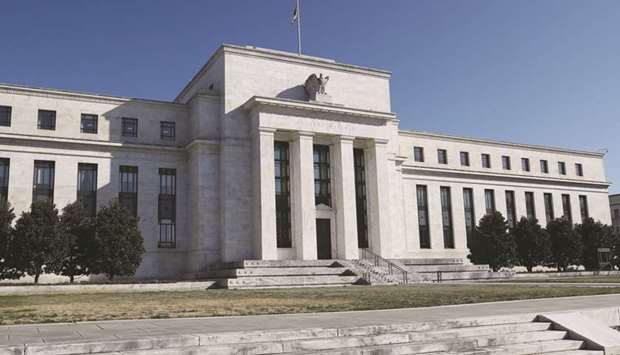Money managers including Invesco Ltd and Wall Street strategists at banks like Citigroup Inc and Morgan Stanley see a relatively easy way to make money in the second half of the year: Buy blue-chip corporate bonds.
The Federal Reserve is providing unprecedented support for company debt, while investors outside the US are pouring into corporate bonds. Investment-grade companies have been borrowing extensively to tide them over with more cash as the economy recovers, making them fairly resilient.
Those factors allowed high-grade corporate bonds to turn in their best quarter in 11 years for the three months ended June 30, according to Bloomberg Barclays index data. And they should allow the debt to perform well for the rest of the year, said Matt Brill, head of US investment-grade credit at $1.1tn asset manager Invesco.
“The Fed has pretty much told you anytime volatility picks up they’re going to buy more,” Brill said. “They’re going to be there. They’ve got your back.”
Invesco expects high-grade risk premiums, the extra yield over US Treasuries that investors get paid for holding company debt, to fall to an average of near 1 percentage point by the end of the year, from about 1.5 percentage point now. At the end of March, the spread was averaging 2.72 percentage points. On a total return basis, the notes gained nearly 9% in the second quarter, their best return since 2009.
In addition to the Fed, European and Asian investors have been piling into US corporate debt in their quest to earn higher yields. There’s more than $13tn of negative-yielding debt globally, essentially all of it outside of the United States, pushing foreign investors to buy US company debt. Hedging costs have dropped too.
“Credit is still the place to be with both the Fed and foreigners welcome,” Citigroup strategists led by Dan Sorid, who also expect spreads to tighten going forward, wrote in a June 25 note to clients.
As the Covid-19 pandemic flares up again in the US, economic uncertainty is high, and there are risks to investing in securities linked to companies that are growing ever-more indebted as their revenue falls. That may be why spreads haven’t yet narrowed to pre-pandemic levels. But high-grade credit may be lower risk compared with many other investments because of the explicit Fed support.
“Currently, the technicals supported by the central bank are outweighing the uncertainties with the virus,” said David Norris, head of US credit at TwentyFour Asset Management. He expects high-grade spreads to tighten close to the pre-pandemic lows of the year based on “overwhelming support from the Fed.”
US corporate bonds tend to perform well in the “repair” part of a credit cycle, presumably around now or coming up soon, when companies are trying to cut debt levels and heal their balance sheets, according to a study by strategists at Morgan Stanley. During that time, the debt often outperforms equities, which in the US gained about 20% in the second quarter after losing about 20% in the first quarter, based on the S&P 500.
In the high-yield market, much of the outlook depends on how the pandemic impacts the economy in the second half.
“It’s probably one of the most uncertain environments I can remember in doing this for many years,” said Oleg Melentyev, head of US high-yield strategy at Bank of America Corp.
Many riskier high-yield companies are currently exceeding the modest expectations that they had set for investors when the pandemic started to spread earlier this year, said Ken Monaghan, co-head of high yield at Amundi Pioneer Asset Management. If virus cases drop and there’s no second wave, then big parts of the economy can reopen, and junk bonds can surge.
But if cases continue to jump or an accessible vaccine or treatment takes longer than expected, the virus will keep harming the economy and have an impact on riskier credit.
Monaghan said under normal circumstances he would expect spreads to tighten. But due to the virus, any tightening will likely be minor.
For Randy Parrish, Voya Investment Management’s head of credit and high yield, the number of Covid-19-related deaths is more telling than the number of cases, since the severity of the virus is likely to have the bigger effect on the market, he said.
Parrish estimates spreads tightening to the 5 percentage points range by the end of the year from their current level of around 6.3 percentage points, while Bank of America’s Melentyev estimates spreads will widen to a fair-value range of 7 percentage points to 8 percentage points, because the economy’s recovery will likely be gradual whenever the risk from the virus dissipates.
Monaghan and Parrish expect defaults to increase slightly by year-end. And more investment-grade companies are likely to get cut to junk through the remainder of the year and beyond, they said. Bank of America estimates about $250bn more in fallen angels when the coronavirus cycle ends in about two years.
High-yield companies will likely borrow less during the rest of the year, the money managers said. The ones who wanted to borrow likely already have, and those funds will last well into 2021, according to Monaghan. The current environment will curtail companies from activities such as buybacks and M&A, so they’re less likely to need the extra funds, Bank of America’s Melentyev said.

The Federal Reserve building in Washington. The Fed is providing unprecedented support for company debt, while investors outside the US are pouring into corporate bonds.
